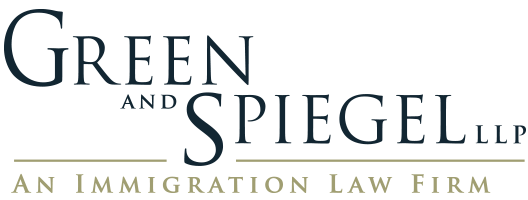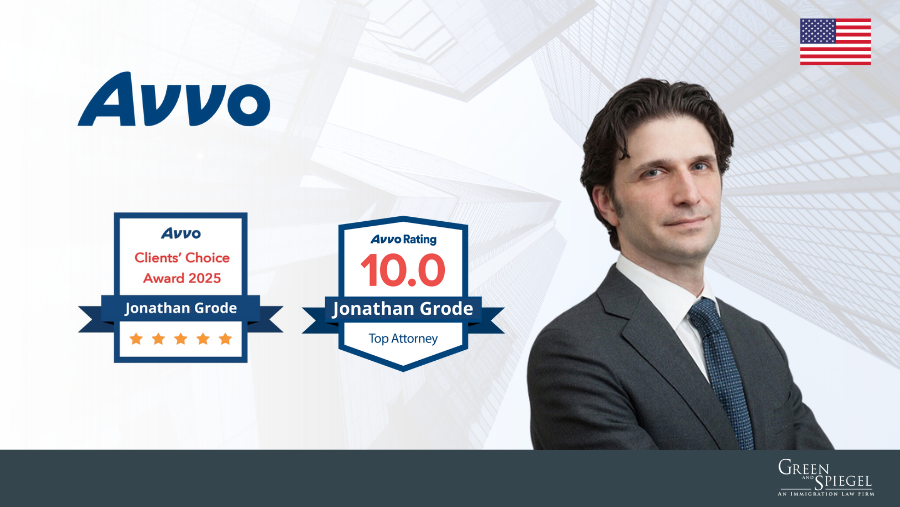New York City has some of the most robust employee legal protections in the United States. The September 24, 2019 New York Commission on Human Rights Legal Enforcement Guidance on Discrimination on the Basis of Immigration Status and National Origin (“NYC Guidance”) fits comfortably within this broader evolution of New York human rights protections. This new guidance provides detailed pointers on which actions are likely to invite discrimination claims and it is wise to review company policies with competent counsel if doing work in New York City.
My purpose here is to look at the NYC Guidance as a general roadmap of liability that rises from Form I-9 and Worksite Enforcement policies. Precisely because New York is an influential force in the legal community, its legislative choices can be predictive. Even though only companies doing business in New York City are subject to the NYC Guidance, the document is worthy of broader consideration.
I intend the scope of this piece to be narrow: looking at what the NYC Guidance can tell us about employee relations and liabilities in the context of worksite compliance policies. I wish to also address the NYC Guidance on employer response to worksite enforcement actions. Please note that nothing here is intended to be legal advice on how to apply NYC Guidance to particular situations. Legal guidance should be sought before applying general, publicly available analysis.
Why does a New York ordinance matter to a non-New York company or employee?
Out-of-state residents are not generally subject to state laws or local ordinances from other states for conduct that occurs outside of that jurisdiction. As applied to the NYC Guidance, no one whose business relationships are entirely outside of New York City is subject to the rules of the New York Commission on Human Rights (“Commission”). However, the Commission’s guidance is a well-crafted document, worthy of broader employer and advisor consideration.
The definition of “employee” is not fixed and, as we discussed in September, can be different from one jurisdiction to another. However, legislatures, courts, and attorneys look to other jurisdictions for ways of crafting and amending law and policy. New York is an influential state and some of the principles and instruments that the Commission captured in the NYC Guidance may make it into the legal tapestry of other jurisdictions. Indeed, the Commission’s work appears to reflect a broader and building consensus on how employers should interact with immigrant employees.
What can the NYC Guidance tell us about employee relations and liabilities that may rise from perceived discrimination through an organization’s Form I-9 policies?
One of the more interesting aspects of the NYC Guidance is that its application is not confined solely to traditional employee definitions. Building on New York’s state definitions, the NYC Guidance notes in footnote 6 that:
[T]he term “employer” shall include any employer, including those with fewer than four persons in their employ…. [N]atural persons employed as independent contractors to carry out work in furtherance of an employer’s business enterprise who are not themselves employers shall be counted as persons in the employ of such employer.
The expanded definition makes careful coordination, with the assistance of qualified counsel, critical to those doing business in New York City. There is something of a nexus here between what we see in New York and what we saw in California in September with the passage of Assembly Bill No. 5, Worker Status: Employees and Independent Contractors. It appears that we are seeing pushback from the states against the so-called “gig economy” which seeks to minimize direct employment controls over people while retaining corporate control over services. In the National Employment Law Project piece “Rights at Risk: Gig Companies’ Campaign to Upend Employment as We Know it,” authors Maya Pinto, Rebecca Smith, and Irene Tung defined the companies which seek to structure their work this way as companies which:
[U]se internet-based technology platforms, accessible via personal computing devices like smartphones, to coordinate and manage on-demand piecework in a variety of service industries, from taxi to food delivery to domestic work.
One way to interpret the NYC Guidance is as a reaction to the business push to reclassify work as outside of the employer – employee relationship. The Commission may therefore be making discrimination directly applicable to even those employers which seek to reclassify work as being performed by contractors, not employees.
The uncertainty that arises from misclassification is a dangerous area for business operations. If a company thinks it has an independent contract relationship with someone but that relationship is really that of an employee, a range of policies and procedures come into full effect. After all, employees are subject to Form I-9 protocols and the discrimination provisions of the Immigration and Nationality Act. The employer incurs other liabilities from the employee relationship that it does not from fully independent contractors too. For a range of reasons, making sure that we know which workers are “employees” and which are not is critical to crafting and enforcing liability reducing policies and procedures.
Settling the question of whether particular roles are employees of contractors places us in a better place to assess which conduct which may give rise to discrimination claims based upon immigration status and national origin. It is here that the NYC Guidance is most helpful to businesses operating outside of New York. Looking at how the Commission explains why the terms “alien” and “illegal” should not be used to refer to people, as an example:
“Alien” – Used in many laws to refer to a “noncitizen” person – is a term that may carry negative connotations and dehumanize immigrants, marking them as “other.”
Application of this principle may require some adjustment and flexibility among managers who recognize that discrimination is a valid concern but have become accustomed to think of it as valid only where there is an intentional discriminatory act or substantial organizational negligence. The Commission seems to be saying that it is perception which gives rise to the liability because the perception of bias or hostility signals that the organization is accepting of unlawful discrimination. This was the subject of Cheryl Kaiser’s and Brenda Major’s 2006 work “A Social Psychological Perspective on Perceiving and Reporting Discrimination.” The observations there are relevant to this discussion because minimizing organizational risk hinges as much on avoiding triggers of a discrimination perception as having solid anti-discrimination policies and procedures.
More simply stated if the organizational goal is to steer clear of likely discrimination claims, use of othering language like “alien” may have the opposite effect, garnering unwanted attention and feeding perceptions that an employer has a discriminatory purpose in what may otherwise be a bias neutral policy. For example, suppose in communicating the receipt of information from the Social Security Administration (SSA) that employee information does not match SSA records, a supervisor announces “because we have a lot of foreign workers, we got this letter…” The statement would be both factually untrue (it isn’t why the company received the SSA communication) and raises the specter of discrimination because it communicates that “I” (the supervisor) am not “you” (the “foreign workers). The ancillary comment raises questions of intent and creates unnecessary liability.
The NYC Guidance handles these matters well, addressing the underlying reasoning and specific words and phrases likely to raise discrimination questions. The Commission also deals with Disparate Treatment and Document Abuse (requesting more documents than are needed to establish eligibility under the Form I-9 Acceptable Documents requirements) in clear and helpful ways. The NYC guidance is an excellent resource for reviewing company policies, procedures, and training.
What does the NYC Guidance suggestion that an employer has a duty to inform employees about potential worksite enforcement tell us about employer – employee relations in a Worksite Enforcement matter?
The NYC Guidance is enforceable against employers doing work in New York City but application of Section III. A. 1. b., as it relates to SSA Employee Correction Request Notices (“No Match Letters”), and Section III. A. 1. c. Immigration Worksite Enforcement, deviate sufficiently far from many companies’ standard practices as to warrant careful consideration. No Match Letters do not create employer knowledge of employee worker status. As the Commission notes on page 11 of the NYC Guidance, “employers should not assume that if an employee is listed in a No-Match Letter, the named employee has an issue with their immigration status.” However during Form I-9 Audits Immigration and Customs Enforcement (ICE) typically asks for:
Copies of any and all correspondence from the Social Security Administration (SSA) to the employer regarding mismatched or no matched SSNs. These forms as known as Employer Correction Requests for Employee Information and commonly referred to as “No Match” letters.
Employers should therefore not treat the No Match Letters as having little significance. The receipt should trigger conversations with counsel about the letter and a broader review of recruitment, hiring, and human resources services to employees.
Similarly, on page 12, the NYC Guidance states “[e]mployers are encouraged to give notice to their employees when they know or suspect that an audit or raid will occur…” The reference is to United States v. California, 921 F.3d 865, 879-82 (9th Cir. 2019) and, while it may be true that “it is not against the law for employers to provide notice to their employees of a worksite raid or audit” (NYC Guidance, Page 12), the particular circumstances matter a great deal. There are situations in which prior notification could trigger criminal liability or negatively impact a company’s interests in administrative proceedings. It is prudent to seek legal counsel, especially since there are many kinds of immigration Site Visits and an employer’s interests may be broader than those imagined by the Commission in the NYC Guidance.
Conclusion
The NYC Guidance is a well-written and detailed document and it provides employers, both in and out of the Commission’s jurisdiction, with much to consider. It is prudent for employers to look at the work performed on their behalf to determine whether those doing the work are employees or contractors. Further policy review and training about concepts like “othering” and specific language use which may trigger discrimination claims makes sense too and pre-event analysis of company policies may help mitigate worksite enforcement liability.
All of these are areas fraught with risk but there are proven, effective risk mitigation strategies and they are best implemented before being hit with a Worksite Enforcement action or discrimination claim. Please contact us over at Green and Spiegel if we can assist with any of these matters.




